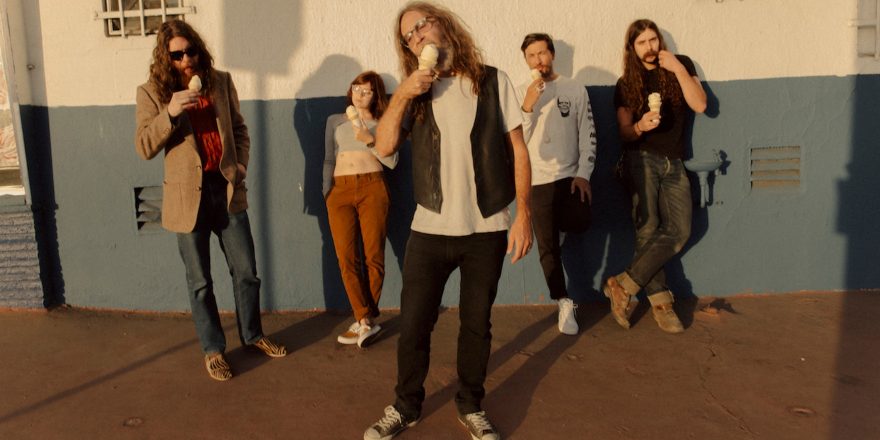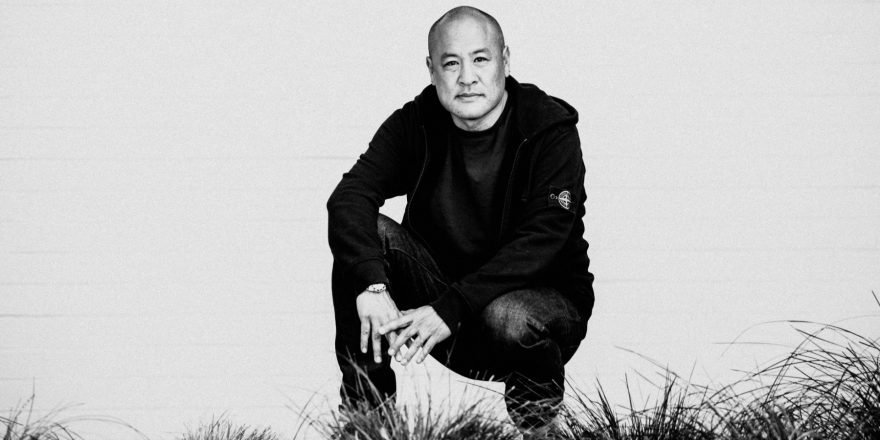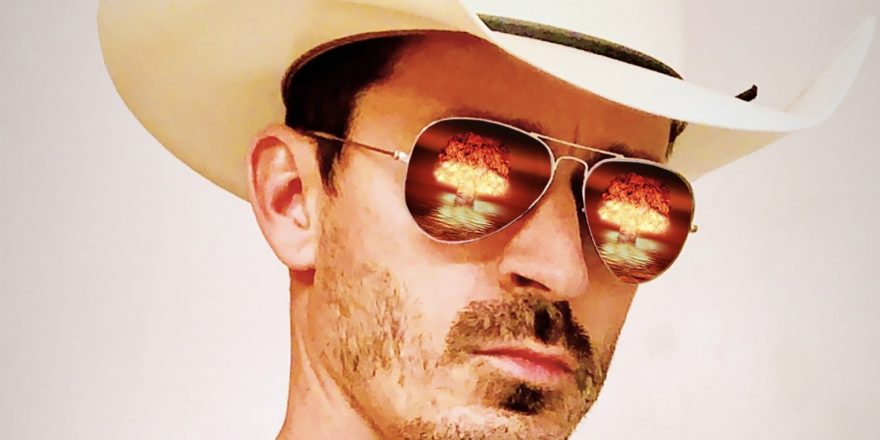Three Great Things is our series in which artists tell us about three things they absolutely love. To celebrate their new album Destroyer — out now — Jeremy Schmidt of Black Mountain told us what he’s been into lately. Check out his choices below!
— Josh Modell, Talkhouse Executive Editor
1. Harry Nilsson, The Point! (1970)
The Point by Harry Nilsson is basically the first thing that I have a memory of being interested in — I consider it a sort of talisman of my life in a weird way. I know it’s one of the things I’ve just sort of loved all my life. When I go back to it, I can hear the same things that I became interested in later. I guess it’s sort of considered a children’s record, but to me it seems almost like a parody of a children’s record for adults. And it’s sort of like a concept-story album. It had a little animated booklet that came with it. And the style of the drawing and stuff definitely reminds me of a Yellow Submarine kind of vibe, late ’60s sort of psychedelic-inspired, weird lysergical illustration. The style is a little bit like some of the Frank Zappa illustrations from the early’70s Frank Zappa albums.
The proverbial favorite uncle of mine introduced me and my little brother to that record when we were very small, probably when we first went over to England, which is where my mom’s side of the family is from. And I think we were just completely enamored with it and this idea of a little kid who was born in a village of people with pointed heads and he doesn’t have a point so he gets banished to the pointless forest and goes on this weird sort of journey of self discovery, which is sort of a metaphor for an interior journey of sorts. It freaked us out a little bit and captured our imagination.
They made a cartoon out of it. I think the version that I remember seeing, which I didn’t see until way, way later, was narrated by Ringo Starr. But I think when they originally broadcast it on TV it was actually Dustin Hoffman, because he was friends with Harry Nilsson. I guess there’s another version with Alan Thicke doing the voice. It’s pretty strange, it’s all really well-known people that did sort of slightly under the radar kind of production.
2. Mellotrons
I’m a big vintage keyboard kind of guy. I kind of got into learning about that stuff in the mid-’90s, just ahead of the time when that stuff started to accrue value. I guess when it just entered the lexicon of antiquity, things that were old became of interest to people, old guitars and tube amps. And then suddenly synthesizers became part of the vintage market, and that’s around the time I got interested. I was still able to find stuff that people were just getting rid of in their garage or in their closets and selling for cheap. So I was able to actually find stuff and buy it all before the Internet, back when you could find stuff available for sale from people who didn’t just have a resource at their fingertips to find out what the value was.
Mellotrons are a pretty unique instrument in that it’s not actually a synthesizer. It’s actually just a tape playback device; what you’re doing when you’re playing a key is you’re engaging a motor system that’s actually playing a pre-recorded tape of that note on an instrument. It was invented by this guy Harry Chamberlin in the 50s. They wanted to come up with a cheaper way for people recording music to have orchestral sounds without having to hire an orchestra. So he came up with this concept of making an instrument and I guess he just chose the keyboard type instrument layout just as a default because then he could assign notes to keyboard. They’re actually like the precursor to a sampler in that when you play a note on a keyboard you’re engaging a prerecorded mechanism that plays a pre-recorded sound.
A lot of bands used them that I liked, Pink Floyd and King Crimson and Moody Blues and tons of prog bands from that era. Everybody that used these instruments on their records, it was like they were using the same sound, because it’s all prerecorded. So when you hear the flutes on “Strawberry Fields” by The Beatles, that’s the same flute sound that you’re gonna hear if you play a Mellotron on anything. That’s always going to be the same sound.
3. Miami Vice
I was a big Miami Vice fan as a kid, I watched it pretty religiously for a period there. To me it just seemed it seemed very sophisticated and had this sort of real existential kind of darkness to it that I guess seemed appealing to my burgeoning teenage mind. I researched Miami Vice when I got older and sort of went back to it. I remember actually, when I was at art school, I was taking a course that was about cultural theory in relation to popular culture. And one of the articles we had to read was about Miami Vice and they were talking about it being a really great example of style over substance, which really caught my interest. I probably hadn’t thought about Miami Vice in 10 or 15 years. So that was of interest to me and I was, like, oh, it was. They had production value that far exceeded anything that had happened on TV before that. And it was all very much about creating an evocative sort of atmosphere. The style of it was very much at the forefront, which I thought at the time was just really cool and seemed really sophisticated.
As a kid I thought Don Johnson was pretty cool. The style — you know, the linen jackets and T-shirt. Slip-on shoes, no socks, the baggy clothes, and of course the great cars.
As a kid I bought a model kit of the speedboat featured in the show that Don Johnson has at some point. And I never actually built it. I just bought it. I wish I’d kept it, I don’t know what happened to it. And I also had some posters, which I still have. There used to be this shop in Vancouver that was sort of a novelty store in the ’80s that sold joke gifts as well as things like those sort of balls that had electricity in them, and you put your hand on it and the electricity goes to your hand. And strobe lights and stuff like that. They had a lot of posters and a lot of shit, Heather Thomas posters and heavy metal posters.
I have one that’s giant, they’re huge, bus shelter-sized posters. I got them for my birthday, grade eight or whatever: a grinning Don Johnson wearing his funny Crockett garb and then the other one was actually the Ferrari. I still have those posters and actually have the Ferrari one up in my little studio space. And I never put them up when I was a kid. I didn’t have space to put them up anywhere so I just kept them and they’re a bit light damaged along the side where they were rolled.
I actually bought a couple seasons. I think in retrospect, season two might be the best. One of the more notable episodes I know is called “Definitely Miami,” and it features it features Ted Nugent in it. It was the shitty, abusive-husband-slash-vice-criminal role he was born to play. Basically it’s an extension of himself.
But another thing I guess that was sort of notable about the show that I’m sure drew me in at the time was the way they used music in the show. They got Jan Hammer to do the score, so it has this really cool sort of dark score but then they would actually license popular music that was completely contemporary, like they would have a song by like Brian Ferry or Phil Collins. Famously they had “In the Air Tonight.” “You Belong to the City” by Glen Fry was a big Miami Vice moment — you know, Don Johnson needs time to think, in a montage of him walking through the city at night with like that song playing. They just capture the zeitgeist at the moment in that show, the whole idea of having a police procedural and elevating it to being this sort of pop culture art show. I read something about Miami Vice and one of the things they said about it was that the network said, “Pitch us something like MTV and cops.” That was the idea for the pitch, MTV and cops put together. So that’s kind of what they did really.
(Photo Credit: Olivia Jaffe)






